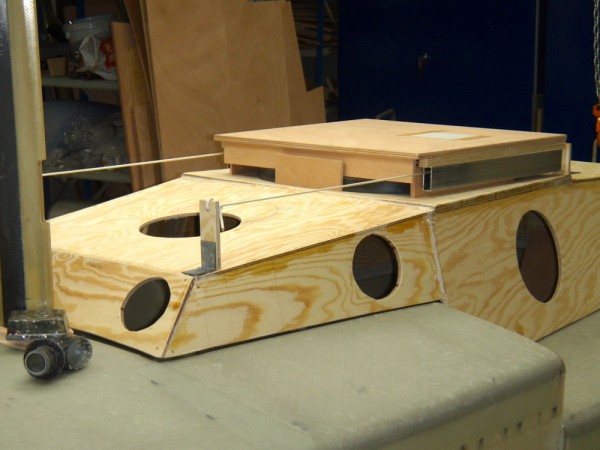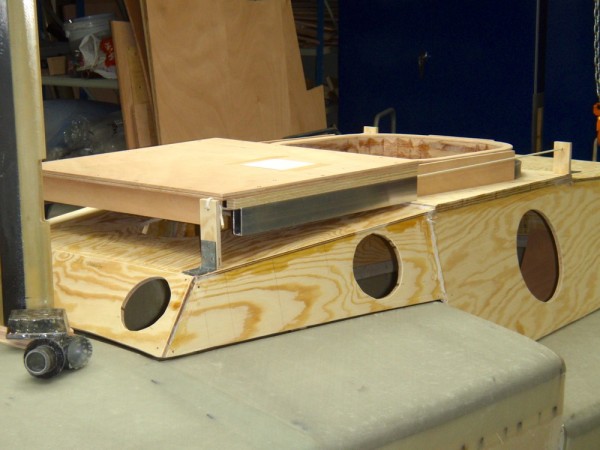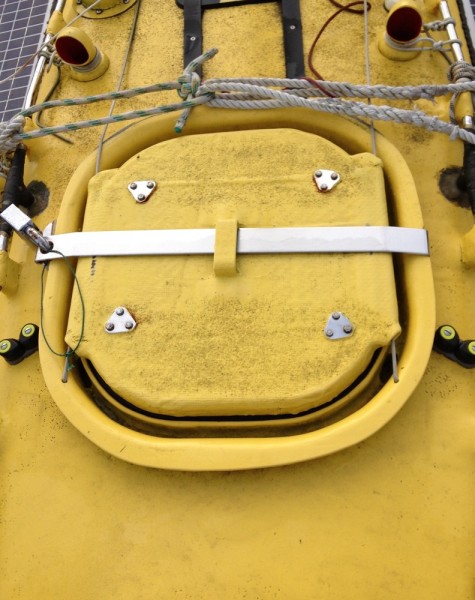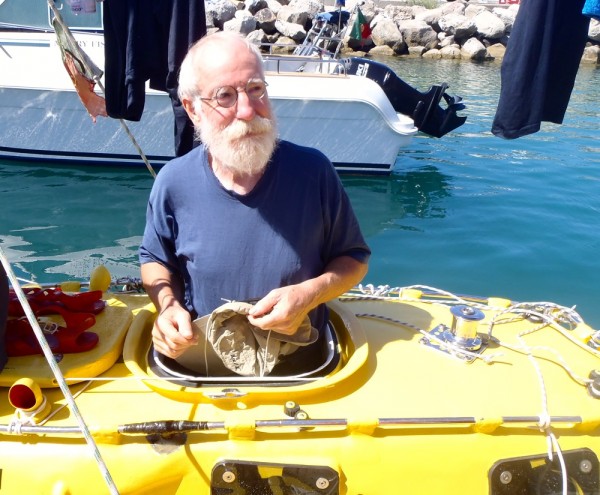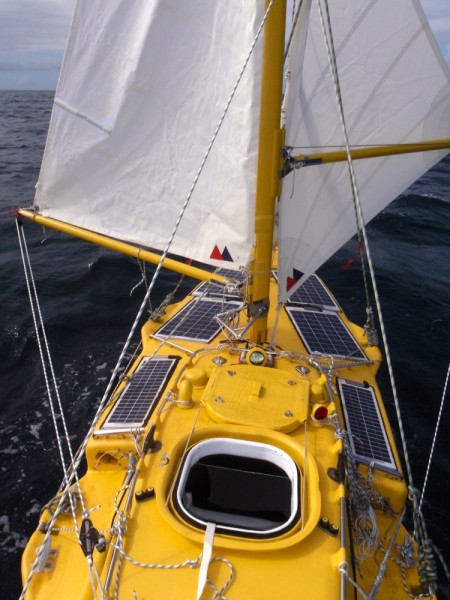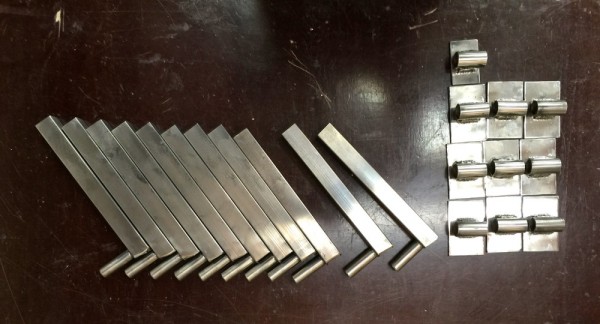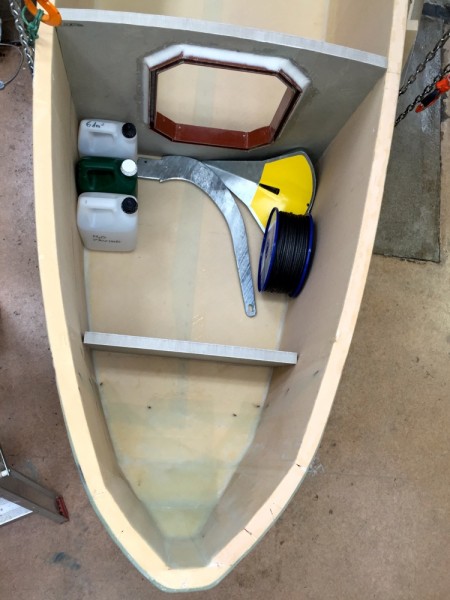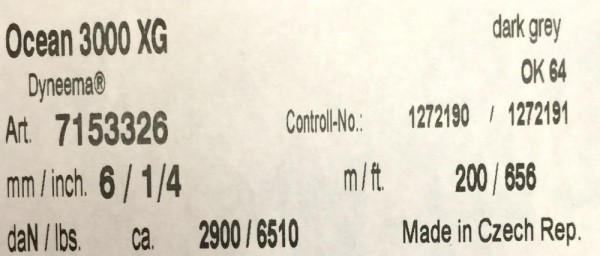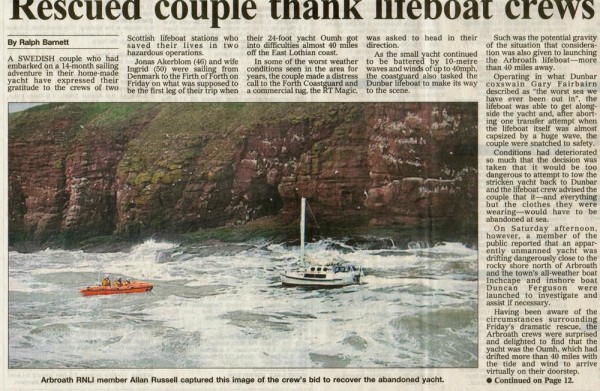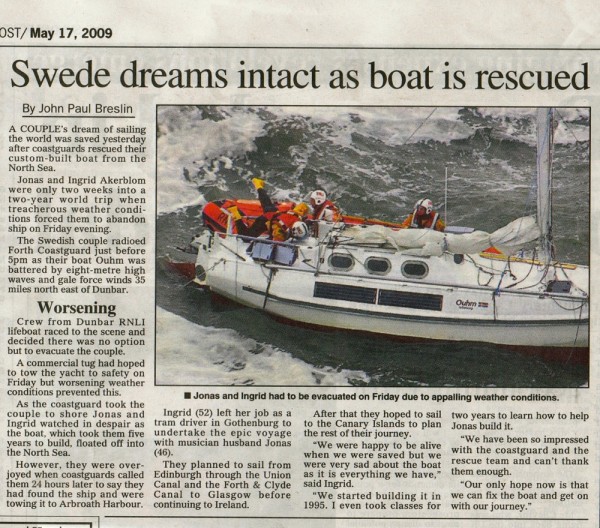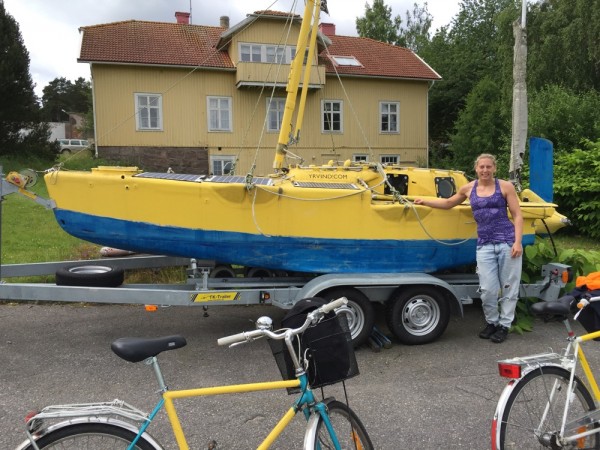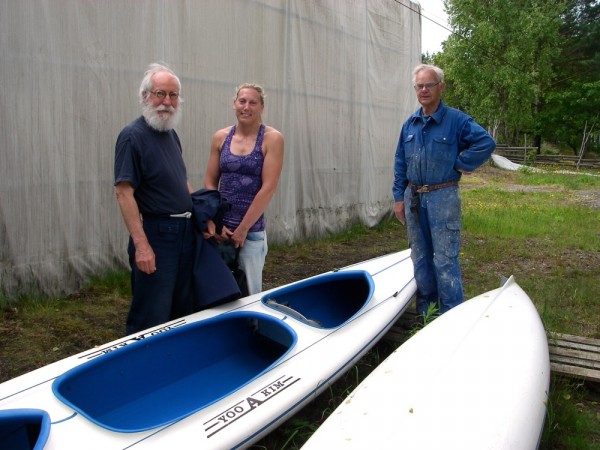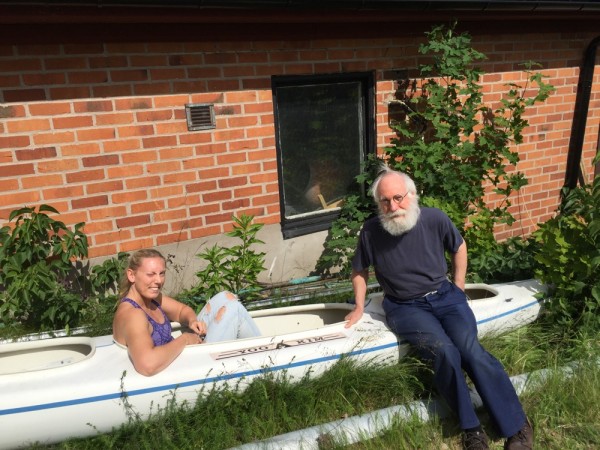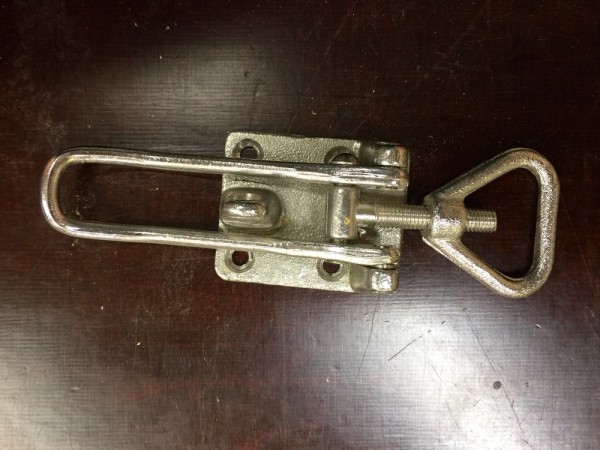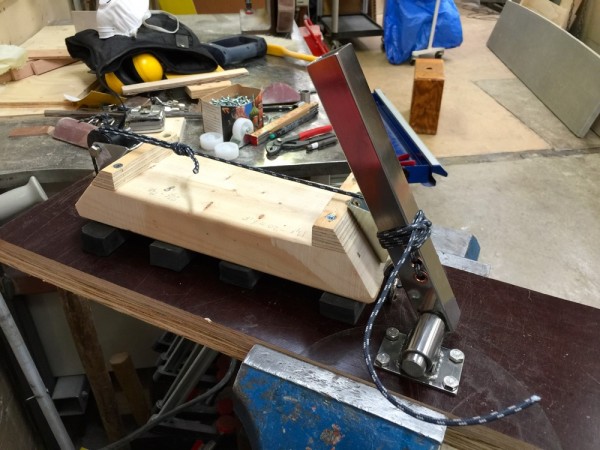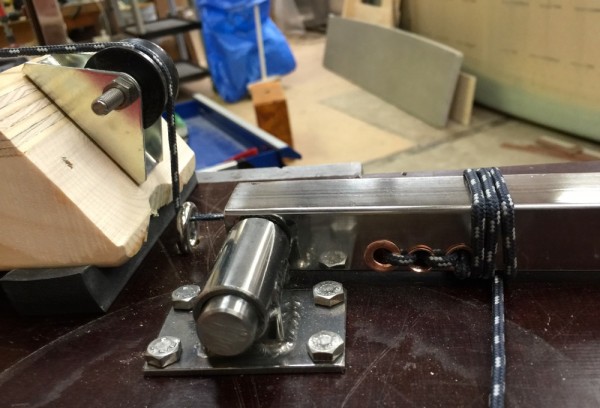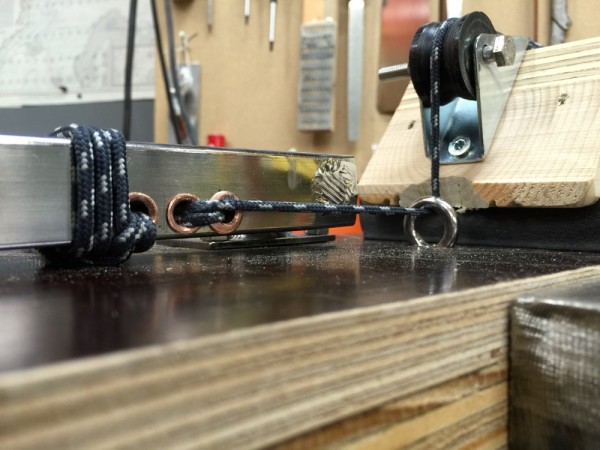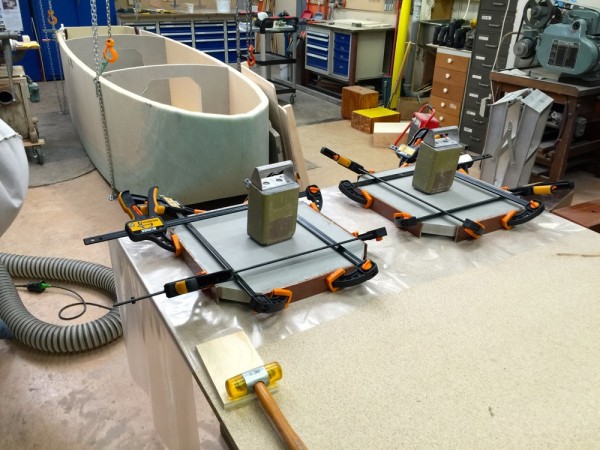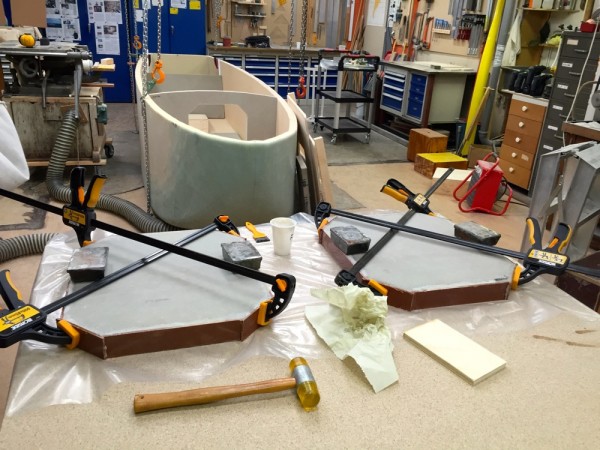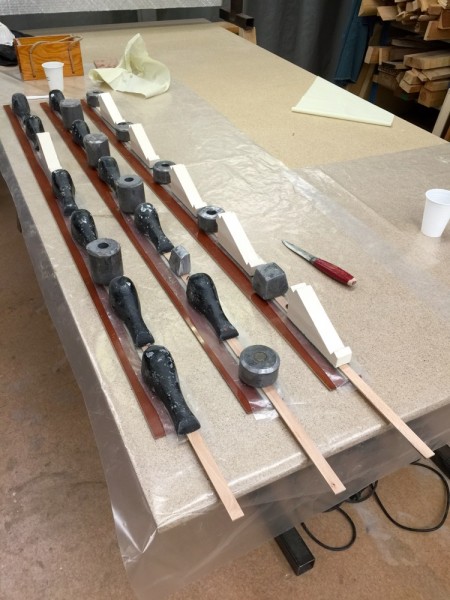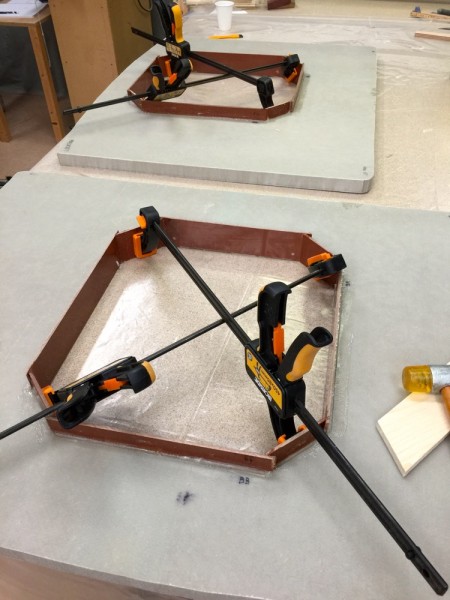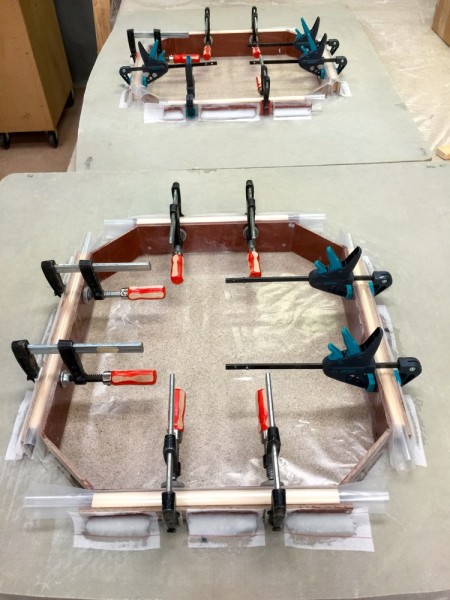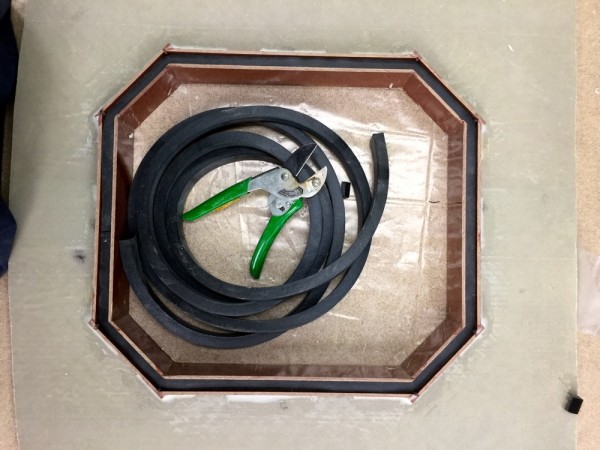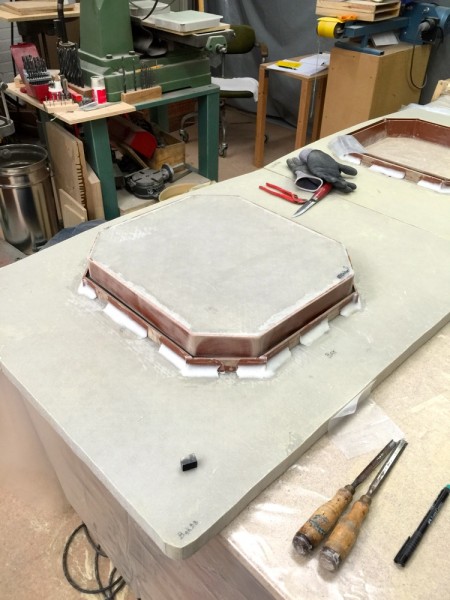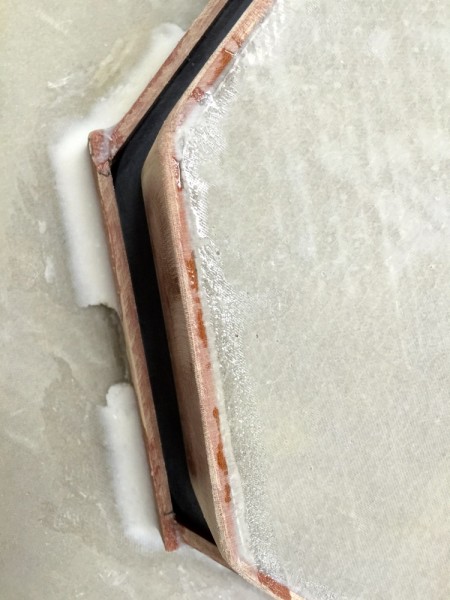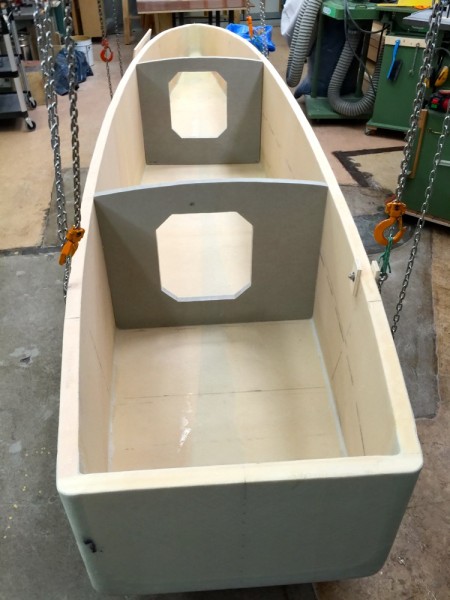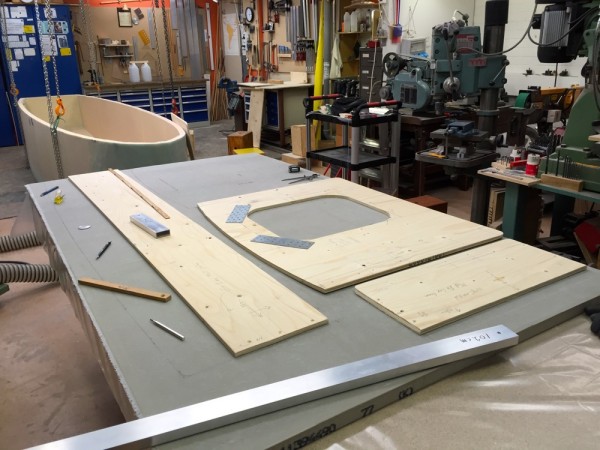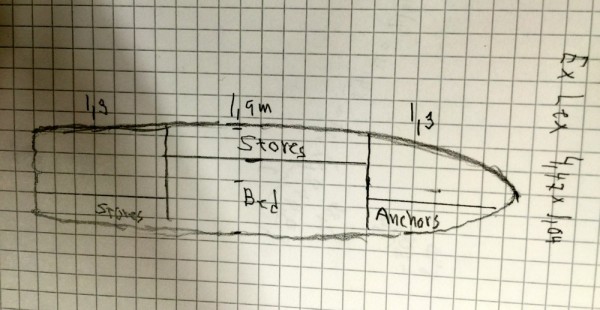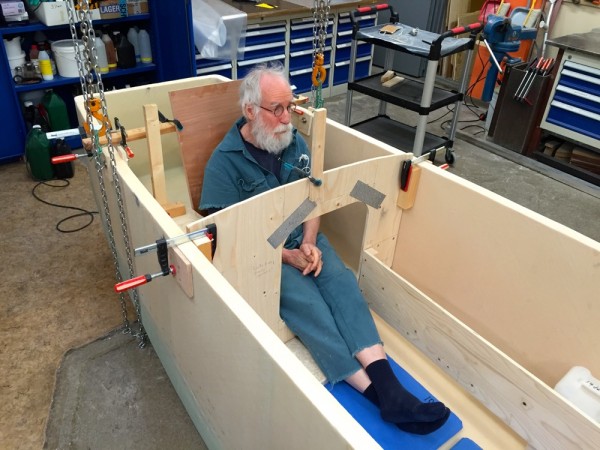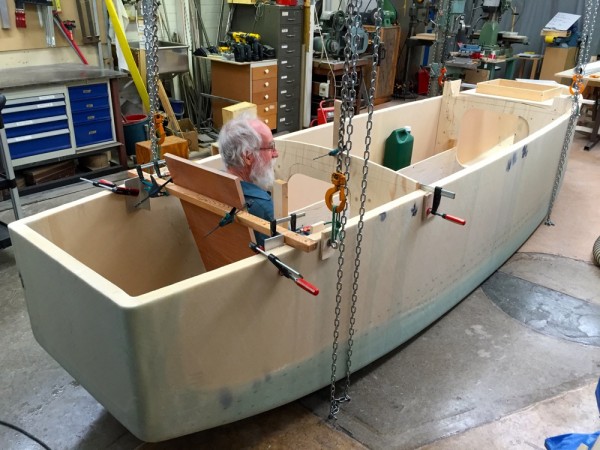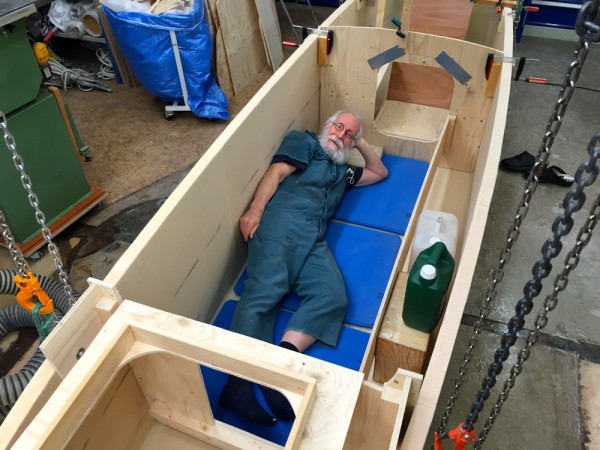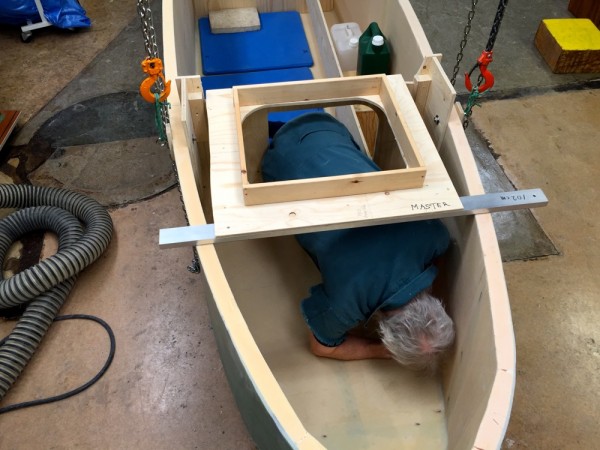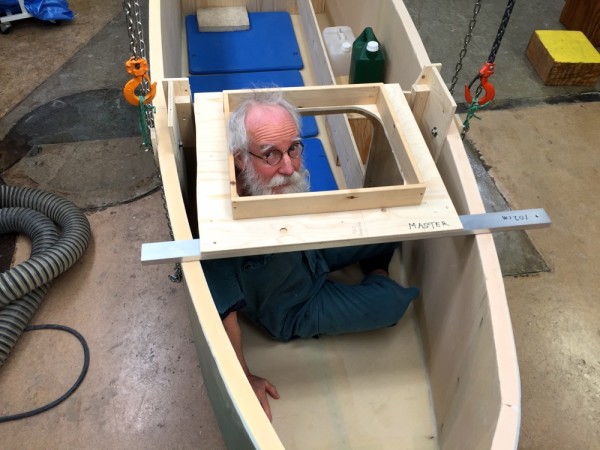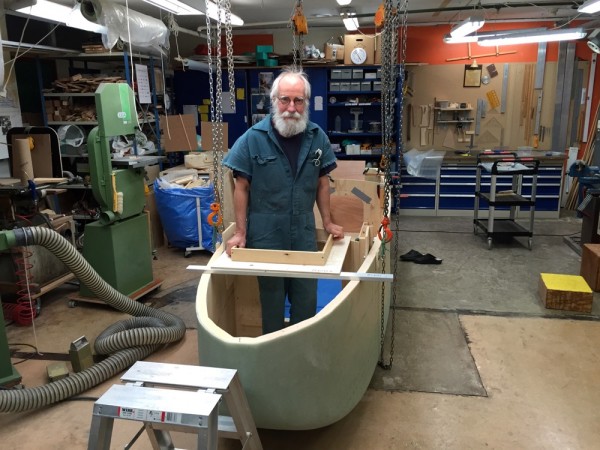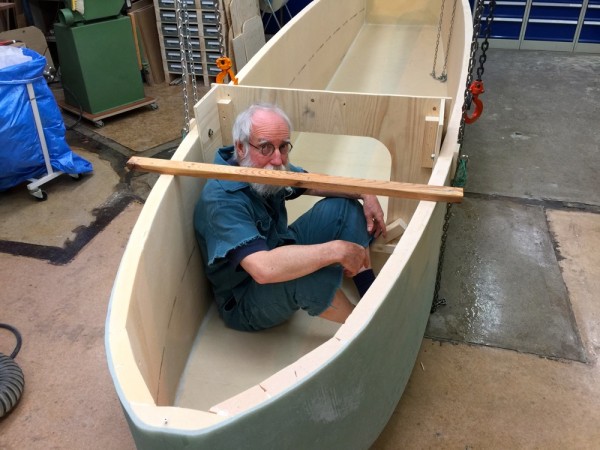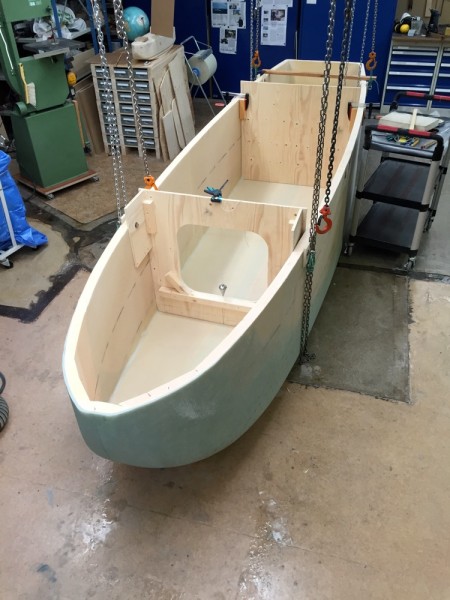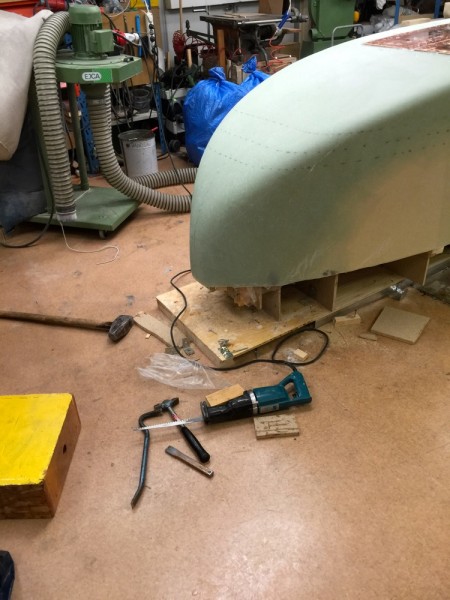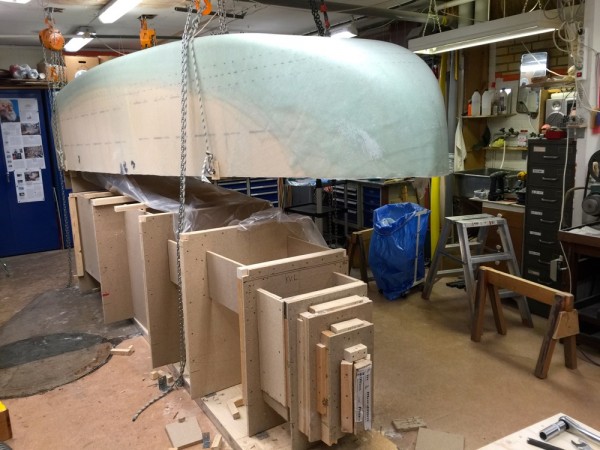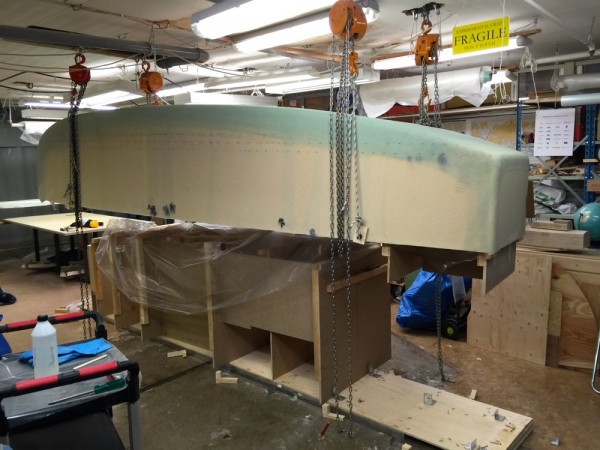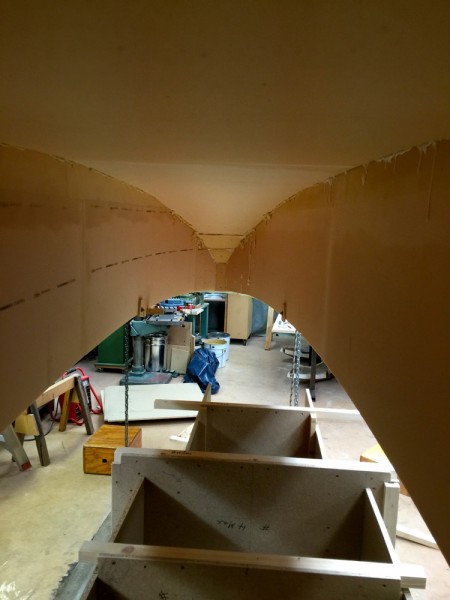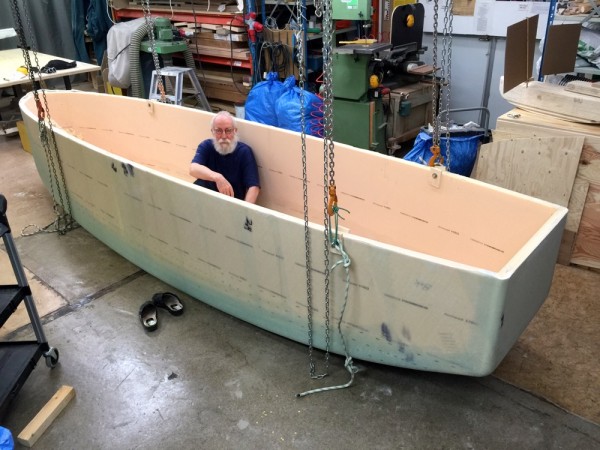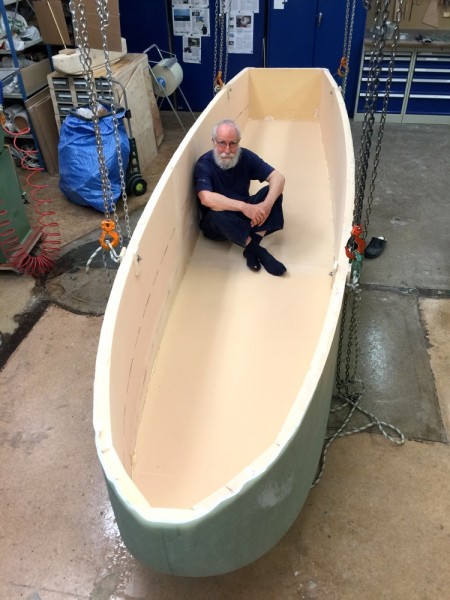My hatches slide, but not on tracks, they are guided by strings. Over the years I have tried many different variations. Sliding and hinged hatches each have advantages and disadvantages. One disadvantages with hinged ones is that they collect spray and when you close them you get a salt-water shower if you do not close them very slowly.
An other disadvantage with hinged hatches is that they cannot be dogged on the hinge side. To get pressure there from the leverage from the hatch the gasket has to be of the correct size. An old gasket may not keep out the water. To overcome that difficulty, on Amphibie-Bris I made the hinges sliding up and down. On Al-Bris with a sliding hatch the slides could move up and down.
On the yellow boat 2011 I let the hatch be guided by strings. It worked very well. Now the hatch could slide forewards to open and there was enough play in the strings to let the tensioners mowe it down against the gasket with enough pressure al around. I will use that solution on Ex-Lex.
Having waterproof hatches is not a question of life and death. It is about peace of mind, of always being dry, warm and snug.
Below are some pictures illustrating my ideas.
The mock up of yellow boat. Hatch closed.
Below hatch open. The guiding strings can be seen.
Hatch of yellow boat, closed and locked.
Me in hatch i Poerto Santo 2011. Hat in hand shoes on hatch and landry in rigging.
Below open hatch in a calm tradewind crossing. I like this kind of hatches.
The little rope coming out of the hatch is my life-line. I always put it on before going on deck even in calm weather like this.
One time I had an American girl as crew. She had read Lin and Larry Pardey who said you need only lifeline in heavy weather. However I was the Captain. She wanted to learn, so one time she was in nice weather on the foredeck changing the wisker poole. When she pulled a string it let go of the jib. To her surprise it let go of the mast at the same time. Instantly she was in the water. It was rather cold becouse we vere near the Falkland Islands had just left them a few days before. I fished her up undressed and dryed her before letting her into the cabin. I do not like salt water inside my boats.
Later she willingly wore a lifeline.
The mainsail boom is let out about 120 degrees making the boat directional stable and reducing risk of gibe. The shrouds are tied on to the chainplates with knots making it easy to mowe them.
Below tensioners for Ex Lex hatches. There are two deckhatches, two bulkhead hatches and two storage hatches. The deckhatches need two tensioners each. By using Dynema-strings the tensioners can be a distance away from the hatch. That way there is no chafe.
The bulkhead hatches are also sliding guided by ropes. Unlike a Japaneese door, as they slide they also twist 90 degrees as boat is very narrow. I have found a neat solution for that. More aboat that later.
To be contiued…
Regards Yrvind

